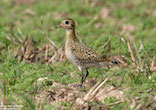This is the most glaciated part of the Alps, containing Europe’s largest glacier and a range of classic glacial features such as U-shaped valleys, cirques, horn peaks and moraines. It provides an outstanding geological record of the uplift and compression that formed the High Alps.
The diversity of flora and wildlife is represented in a range of Alpine and sub-Alpine habitats and plant colonization in the wake of retreating glaciers provides an outstanding example of plant succession. The impressive vista of the North Wall of the High Alps, centred on the Eiger, Mönch and Jungfrau peaks, has played an important role in European art and literature.
The Jungfrau-Aletsch-Bietschhorn region is the most glaciated area in the Alps and incorporates the Aletsch glacier, the largest and longest in western Eurasia. It is thus of significant scientific interest in the context of glacial history and ongoing processes, particularly related to climate change.
The Jungfrau-Aletsch-Bietschhorn region provides a wide range of alpine and sub-alpine habitats. Superb examples of ecological succession exist, including the distinctive upper and lower tree-line of the Aletsch forest. The global phenomenon of climatic change is particularly well illustrated in the region, as reflected in the varying rates of retreat of the different glaciers, in turn providing new substrates for ongoing ecological succession.
The impressive landscape of the Jungfrau-Aletsch-Bietschhorn region has played an important role in European literature, art, mountaineering and alpine tourism. The aesthetics of the area have attracted an international clientele and it is globally recognised as one of the most spectacular mountain regions to visit.
Jungfrau photos
More: unesco.org









